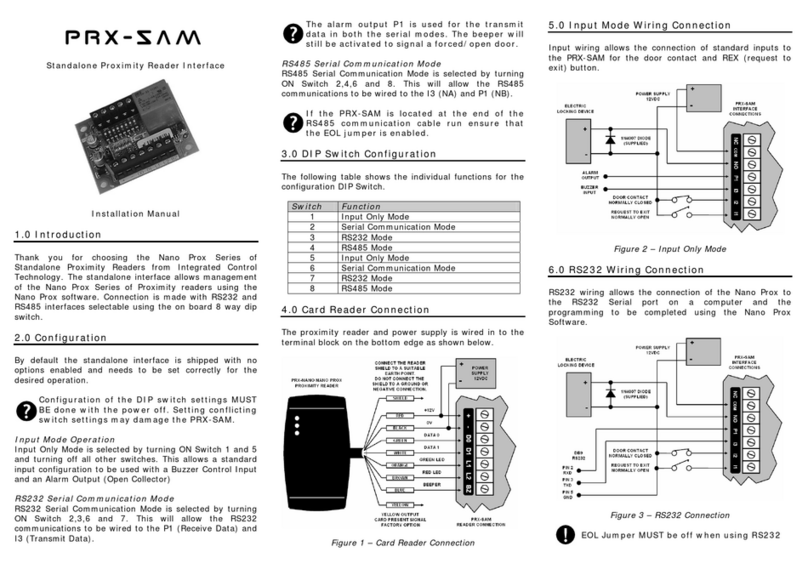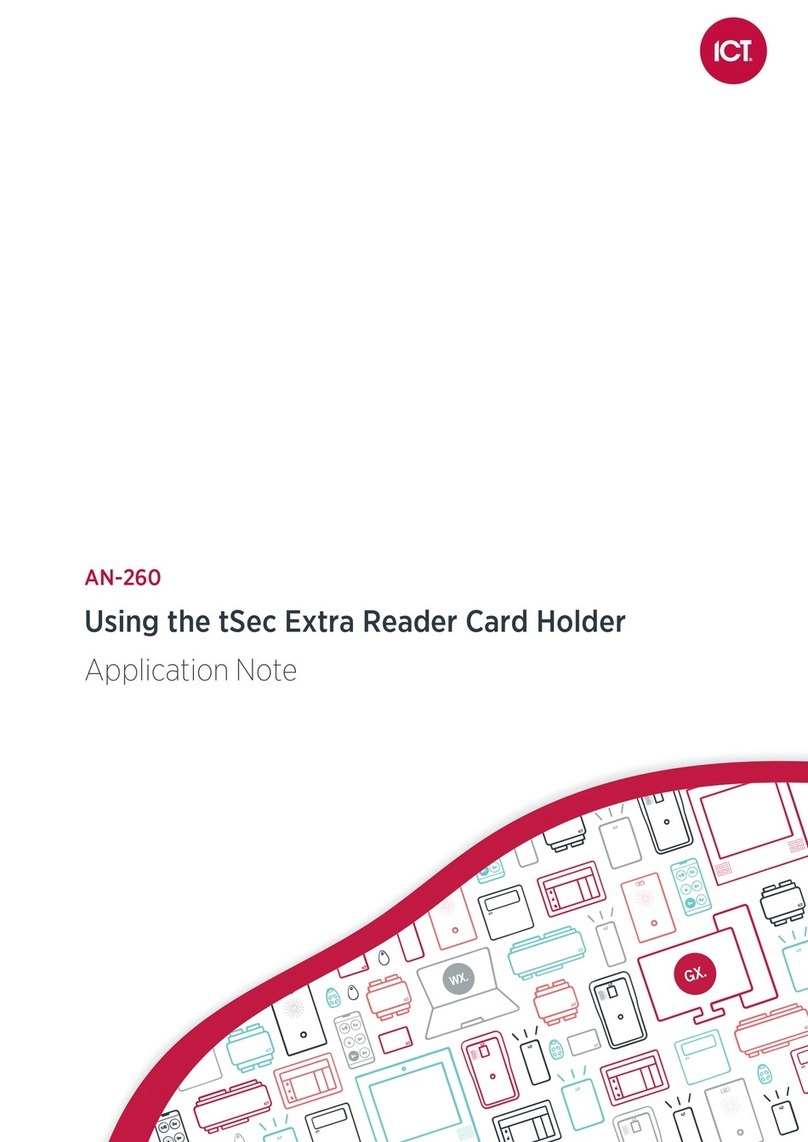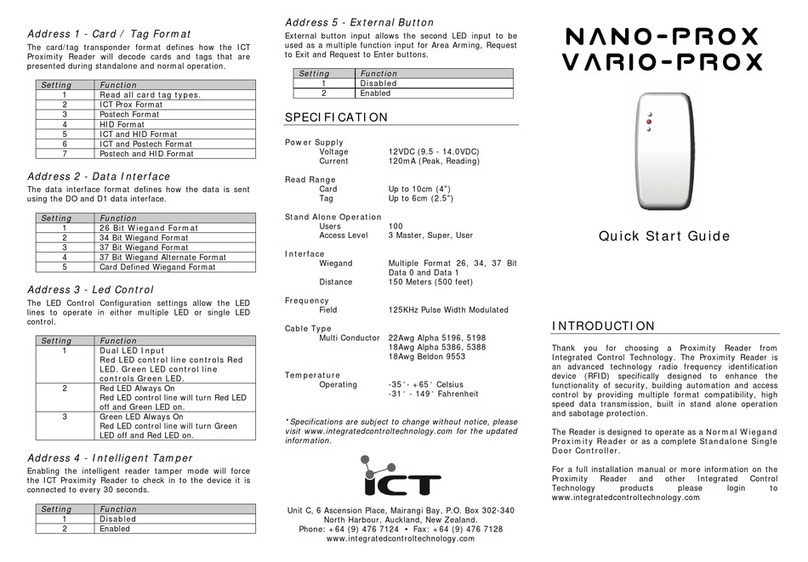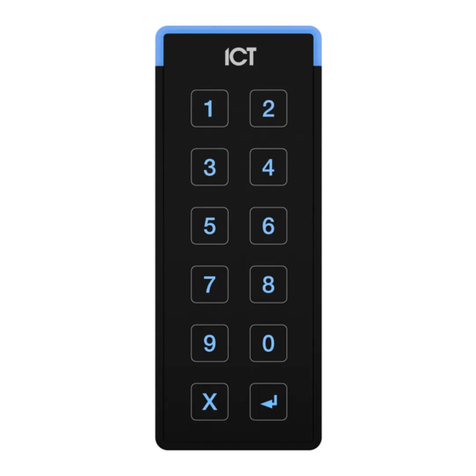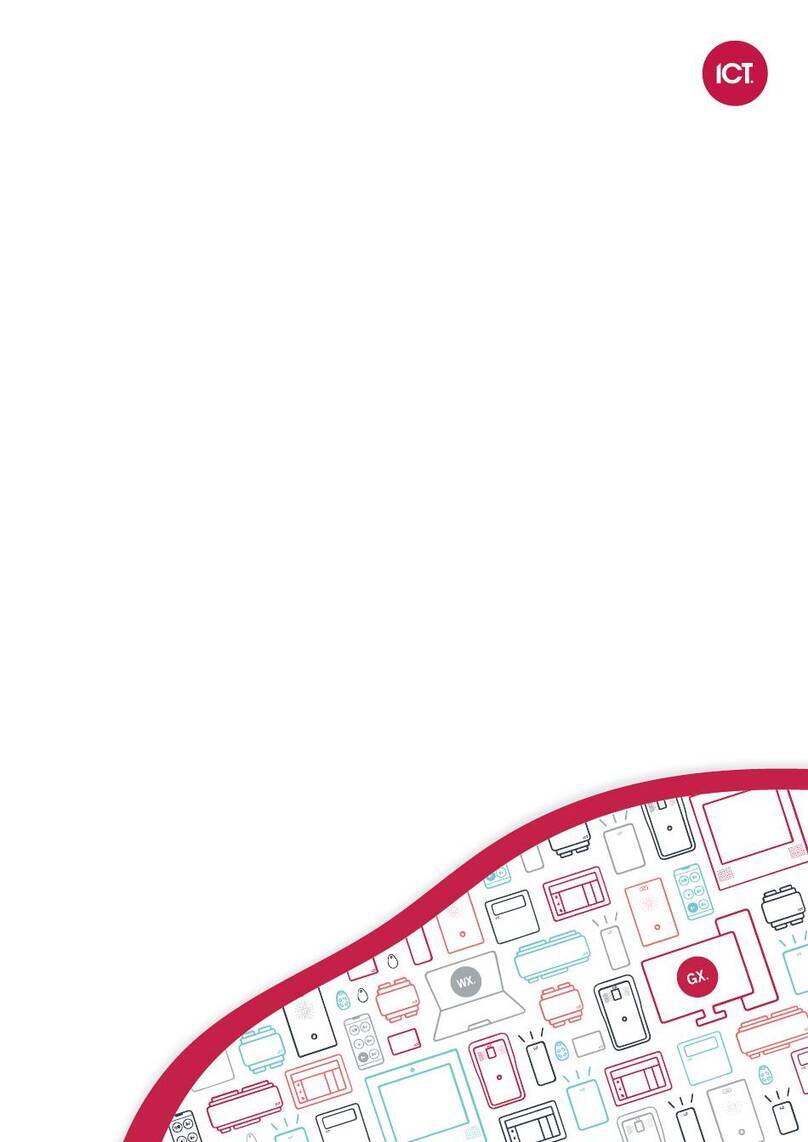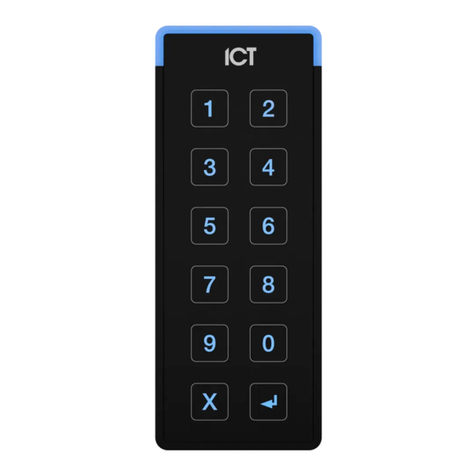
Introduction
This installation manual provides instructions and technical specifications for physical installation of the ICT TSL
Multi-Technology Card Reader. For programming information, see the ICT Card Reader Configuration Guide,
available from the ICT website.
About This Module
The TSL Multi-Technology Card Reader is an advanced-technology, high-frequency smart card radio frequency
identification device (RFID), specifically designed to enhance the functionality of security, building automation and
access control by providing multiple format compatibility, high-speed data transmission and sabotage protection.
The TSL card reader can operate using intelligent RS-485, OSDP or Wiegand communications, and can be
programmed to read and output different card formats.
Before installing this product we highly recommend you read this manual carefully and ensure that the data
formats you intend to program will operate with the configured access control or security product.
Current features of the TSL reader range include:
⦁Multi-card technology provides support for 125KHz, MIFARE and DESFire cards
⦁Encrypted RS-485, un-encrypted configurable RS-485, OSDP or standard Wiegand connection
⦁Bluetooth® Wireless Technology for reading mobile credentials
⦁NFC credential reading
⦁Configurable LED strip: 2 color control via external LED wiring, 16 color selectable for Protege GX function
codes and other features
⦁Keep alive transmission every 30 seconds for intelligent tamper management
⦁Keypad output on RS-485, OSDP and Wiegand data lines (keypad versions only)
⦁Programmable via the Protege Config App
⦁Fully encapsulated design with environmental IP rating of IP65 for outdoor and indoor operation
Note: TSL readers are shipped in RS-485 configuration by default.
TSL Multi-Technology Card Reader | Installation Manual 5






